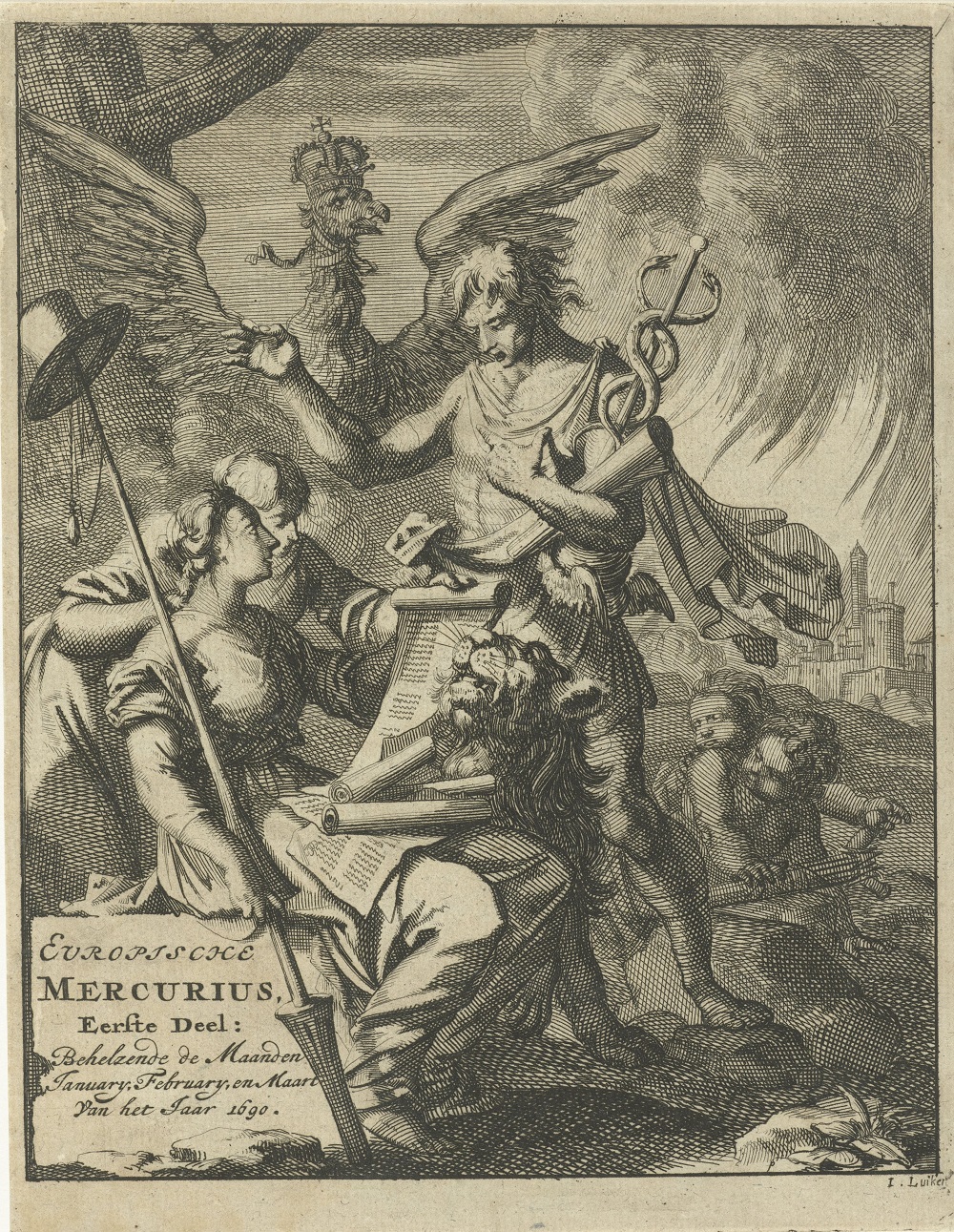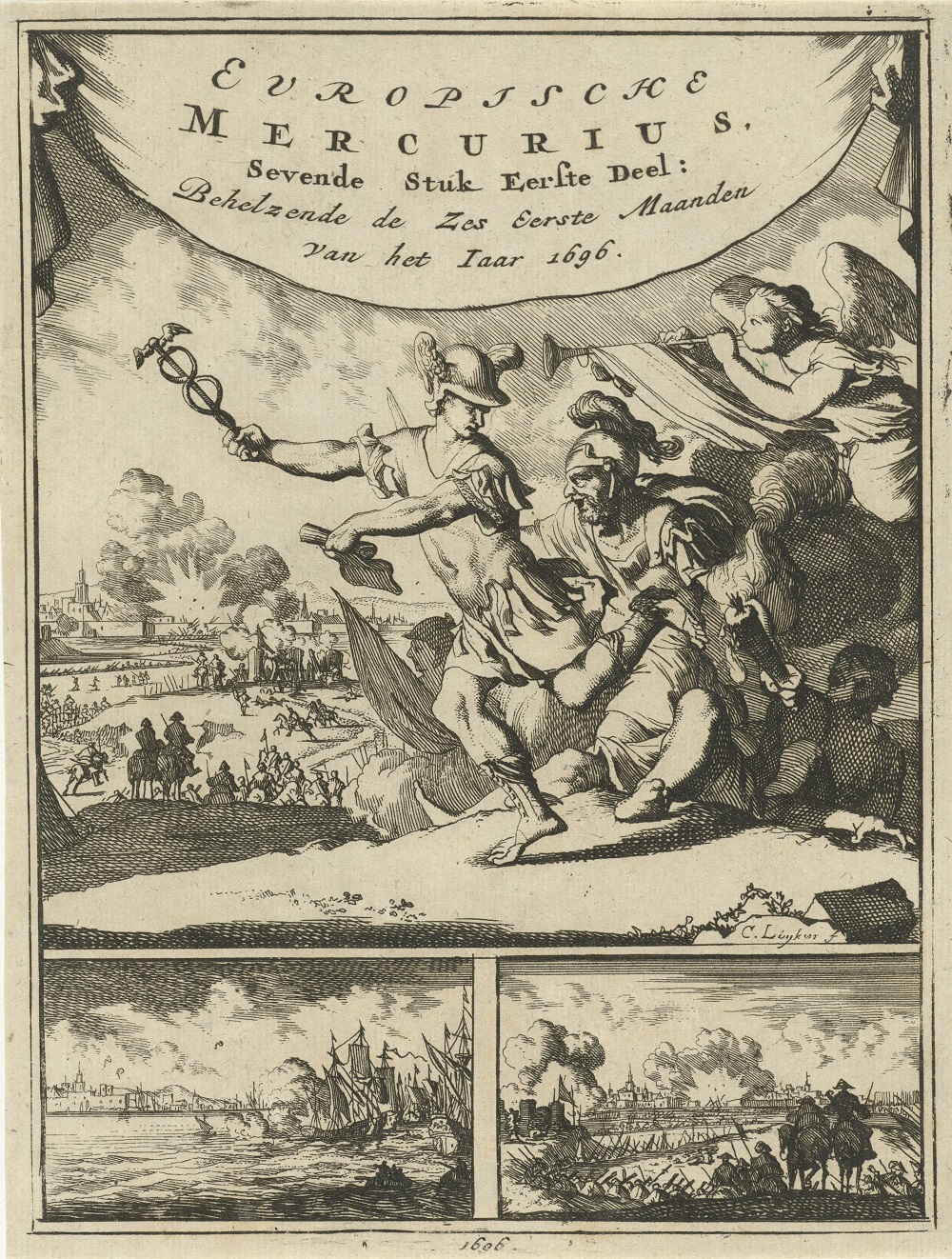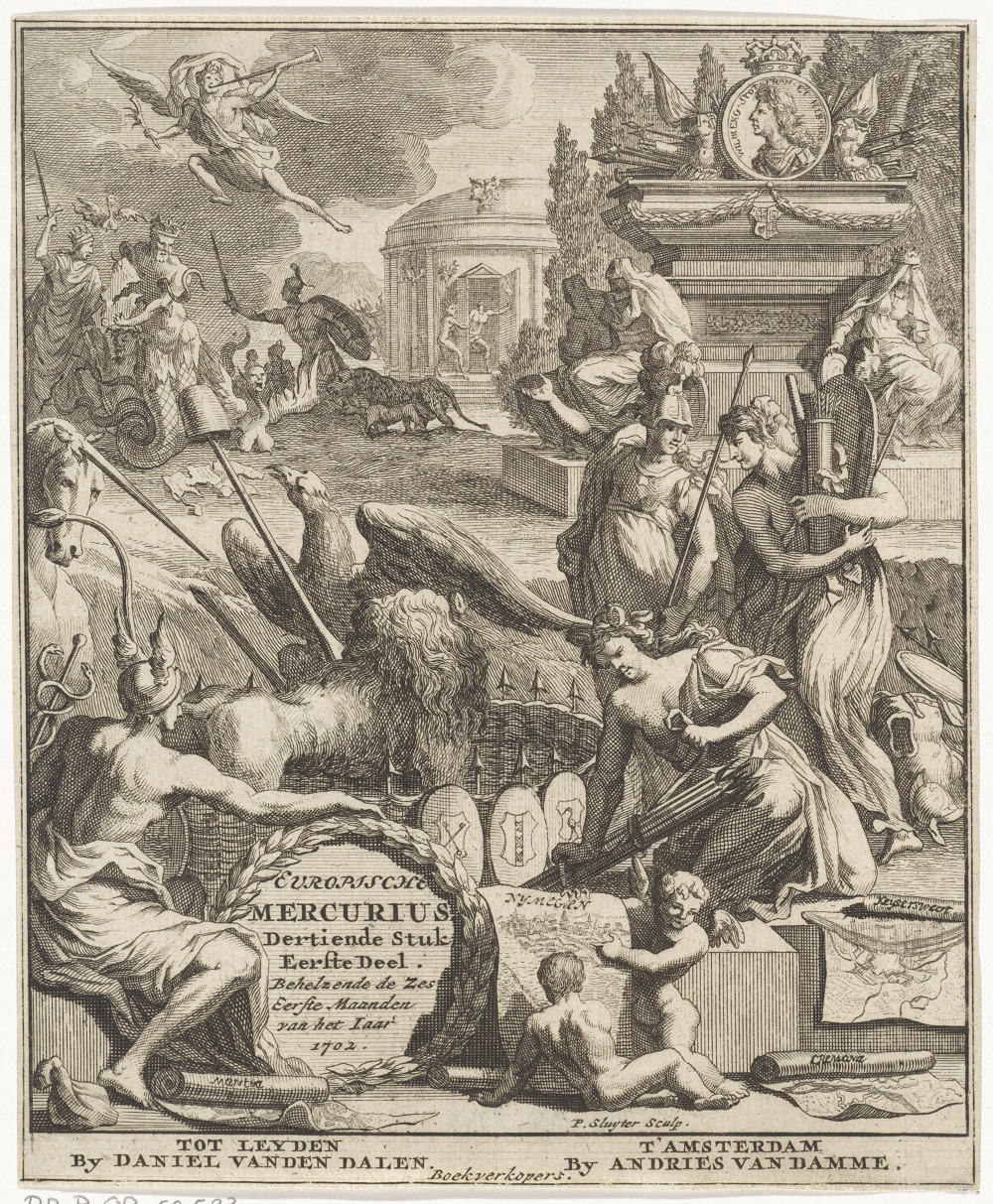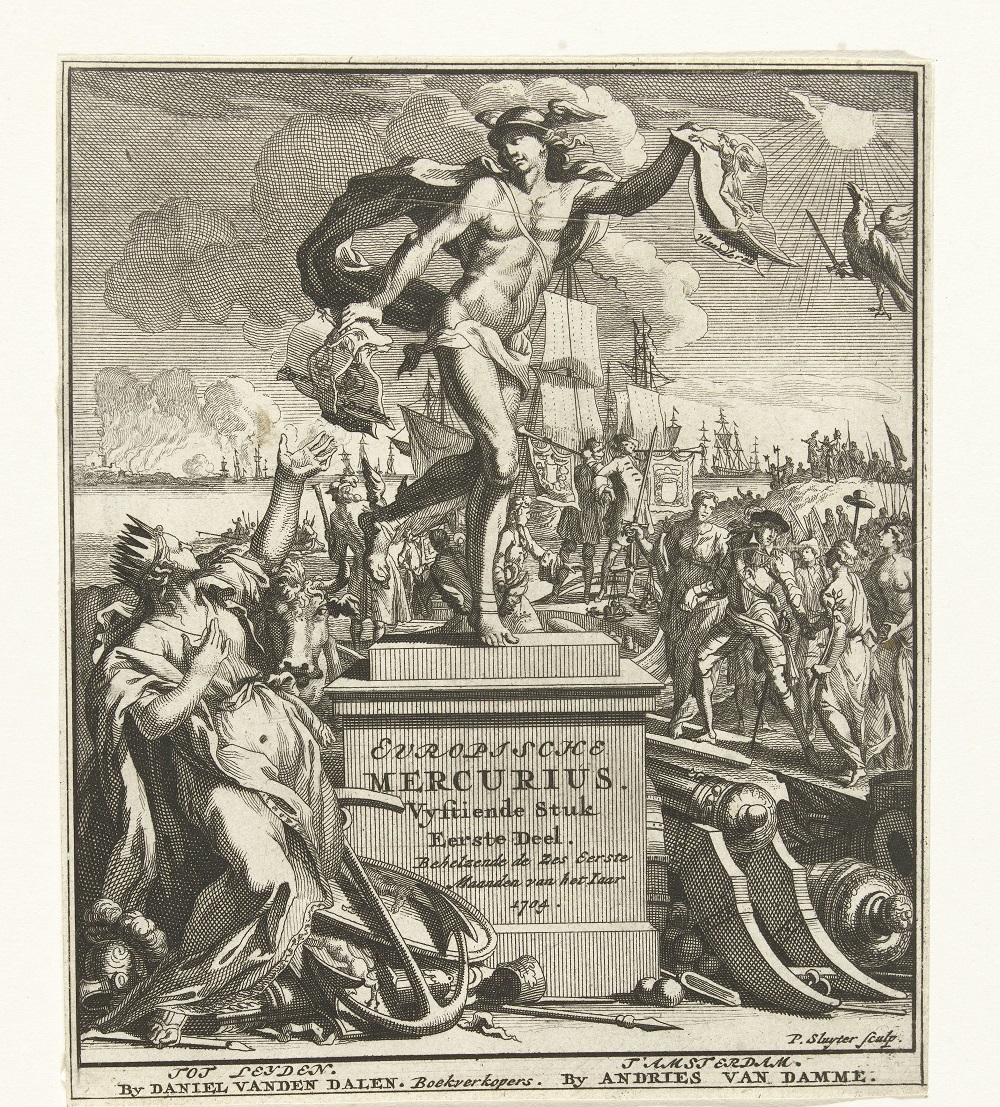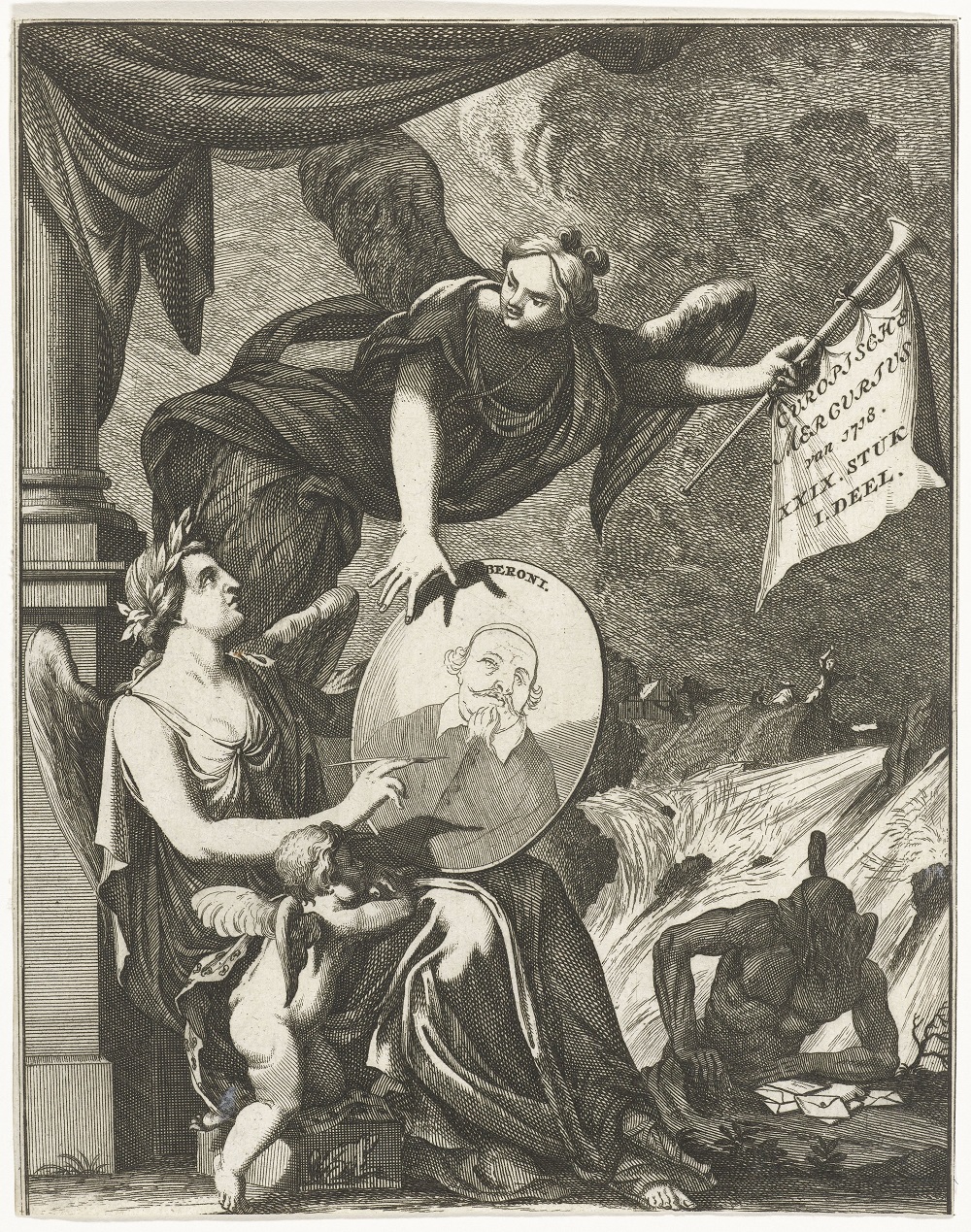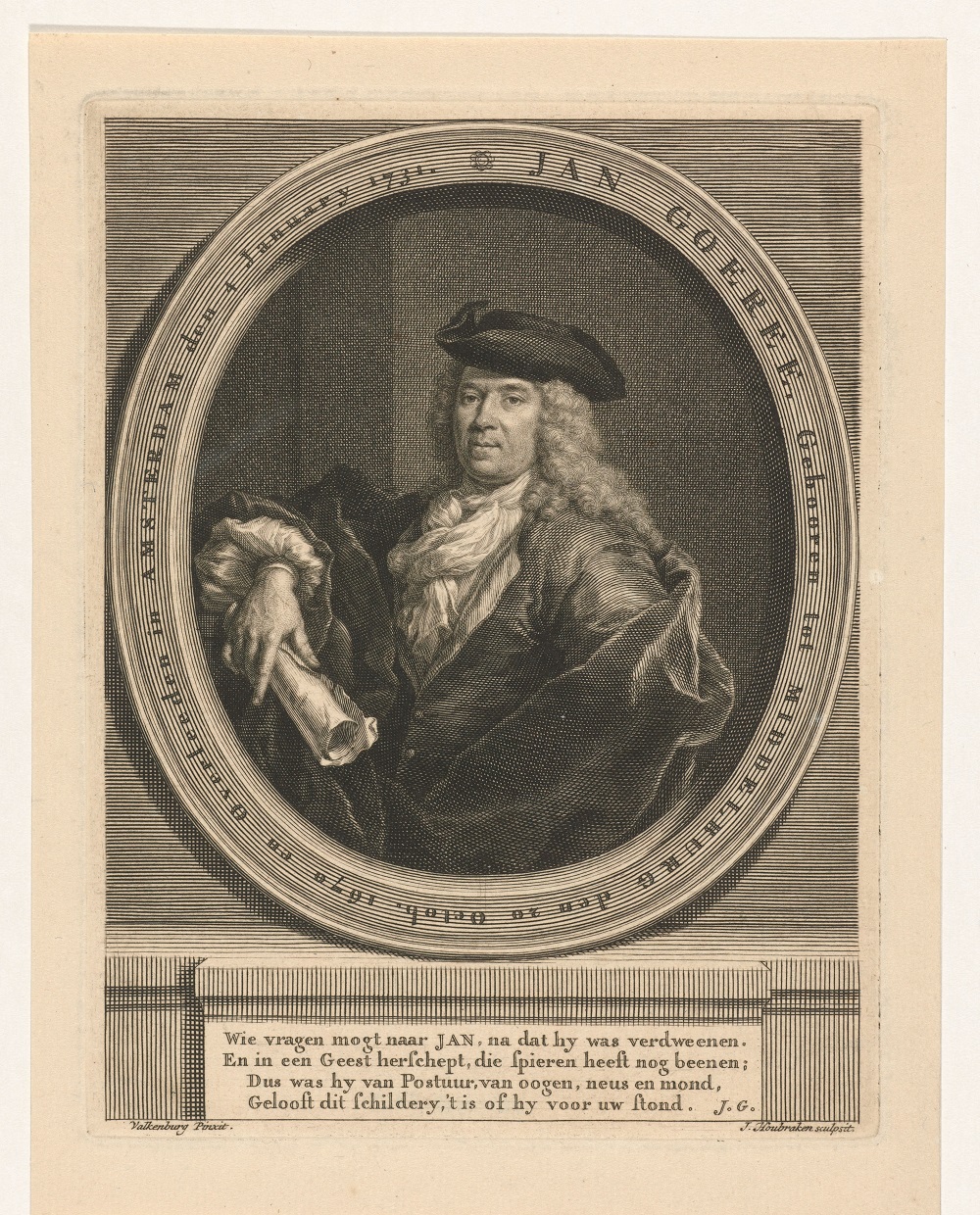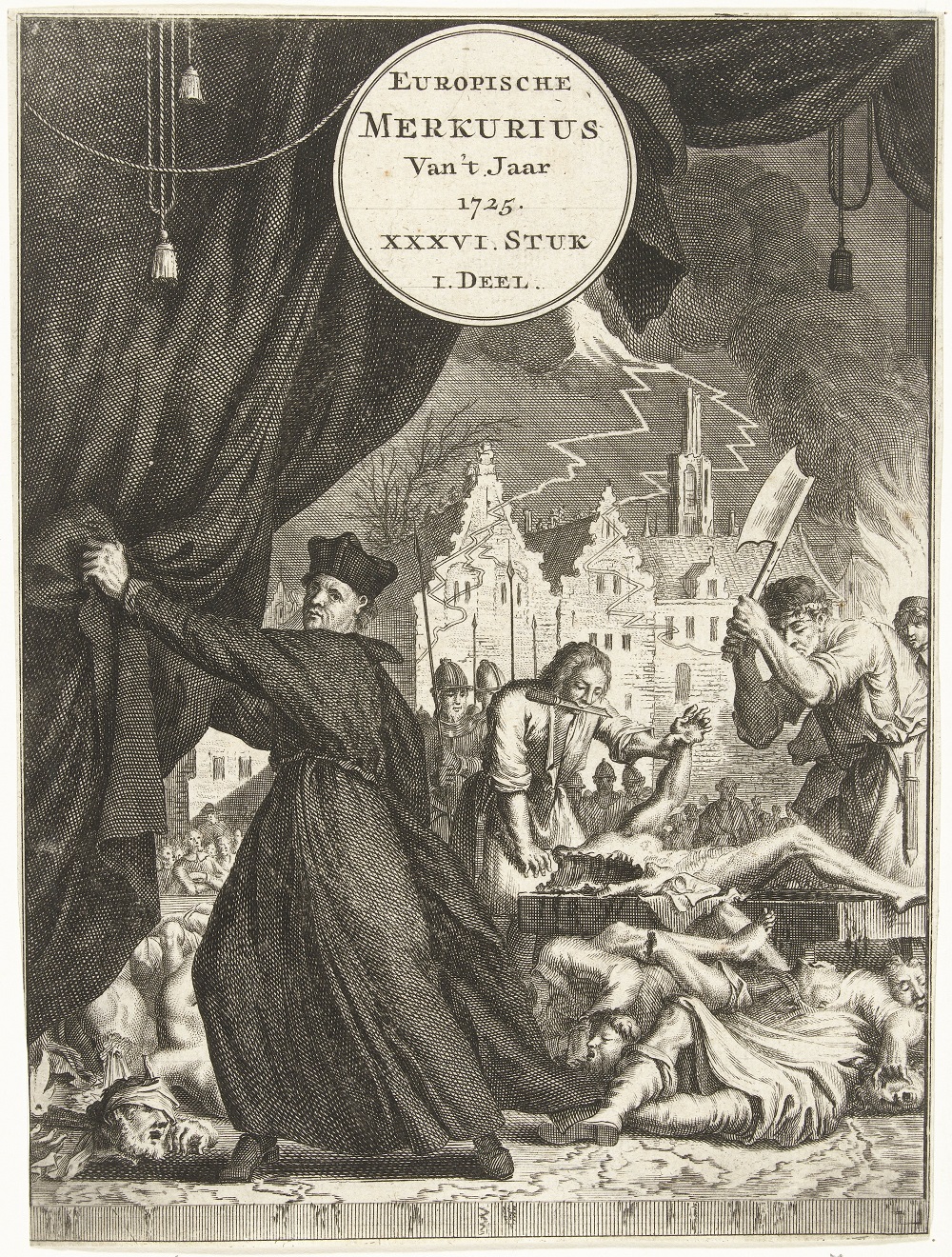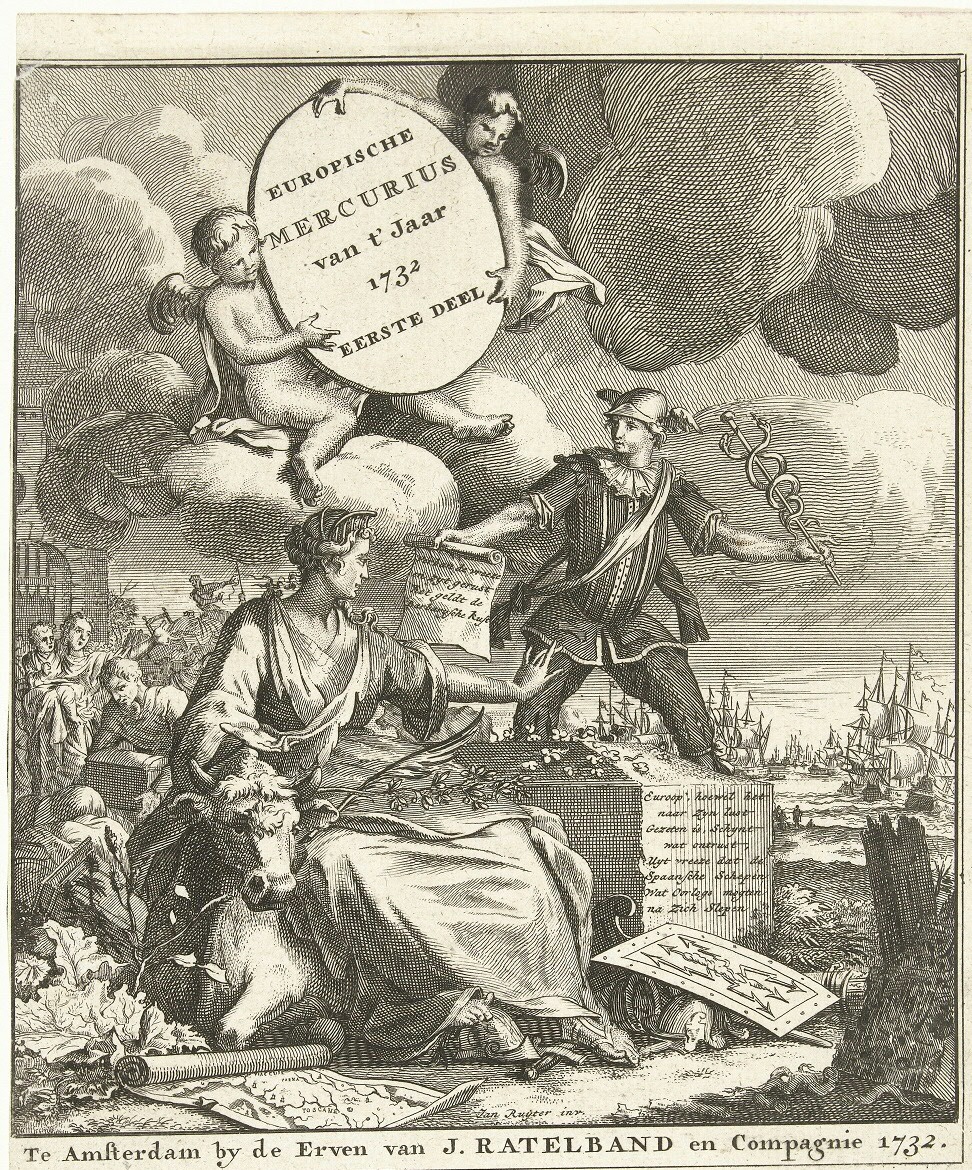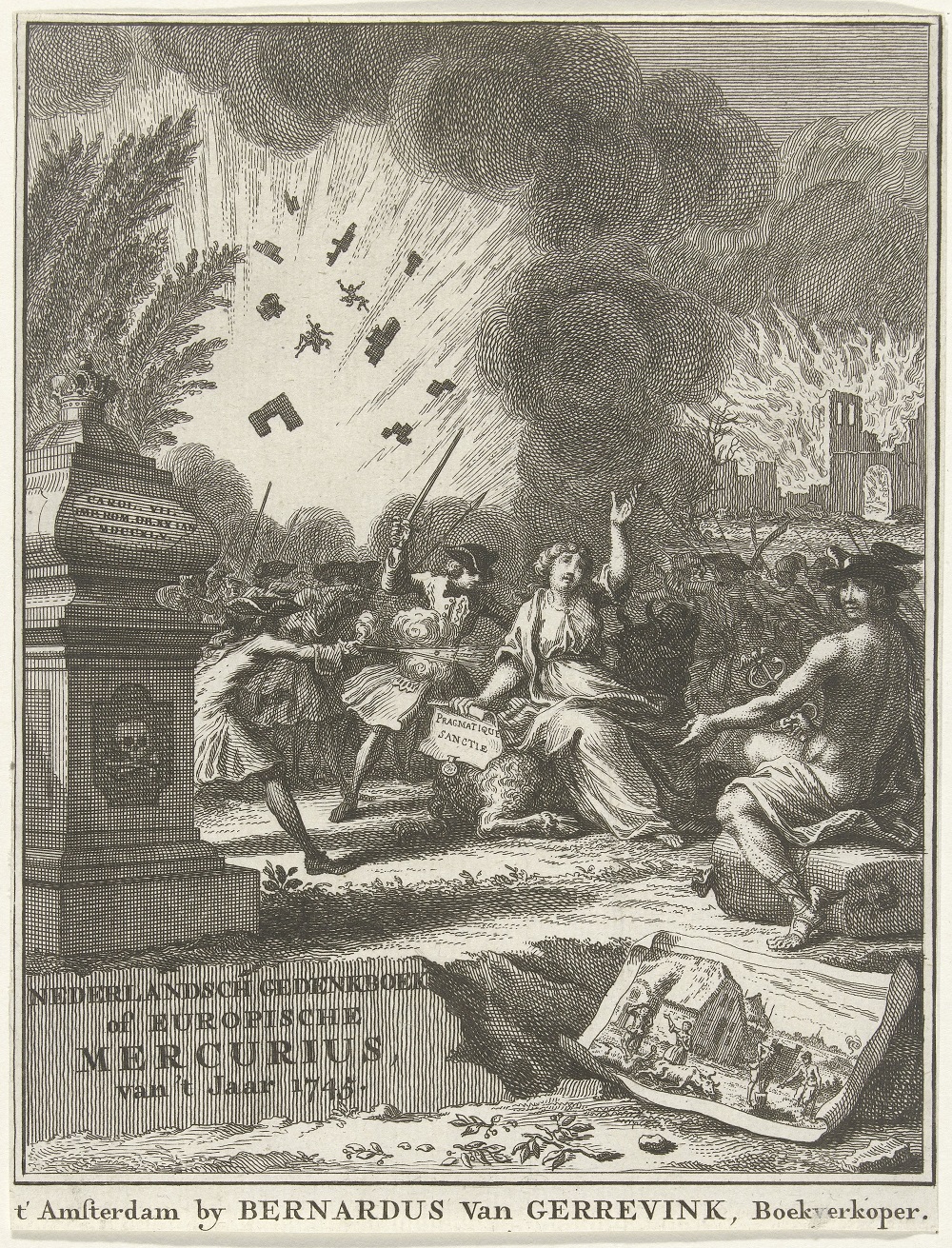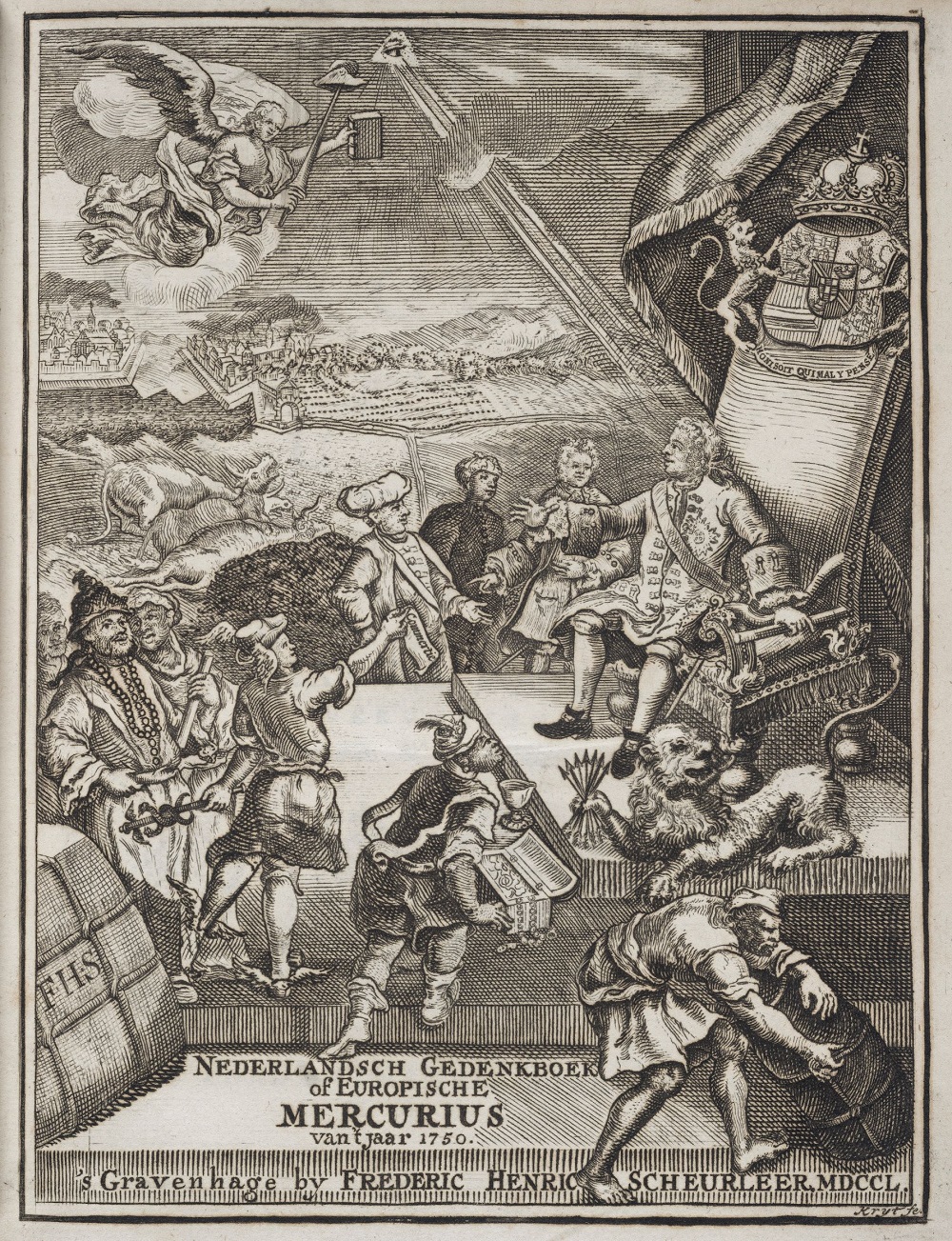Frontispieces of the Europische Mercurius (1690-1750)
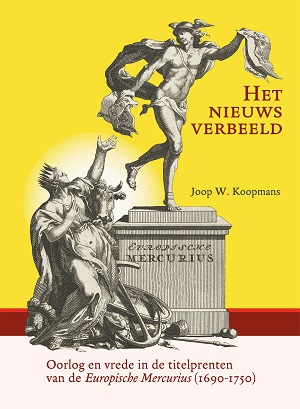
In the early-modern period, the frontispiece of a book functioned in the same way as book covers do today. In media such as the Europische Mercurius journal, published in book form, the frontispiece displayed all sorts of high-profile news items. As a result of my research into the Europische Mercurius, held in the Special Collections of the University of Groningen Library, in 2021 I published the book Het nieuws verbeeld: Oorlog en vrede in de titelprenten van de Europische Mercurius (1690-1750) [Representations of the News: War and Peace in the Frontispieces of the Europische Mercurius (1690-1750)]. The book discusses the development of this journal and all of its sixty-one frontispieces.
Until the nineteenth century, books were published and sold without bindings. They were sometimes provided with a temporary cover, but were often distributed even without that. Customers would get their purchased pages and booklets bound, and would choose the bindings themselves. As a result, many books in European libraries had the same type of bindings depending on the tastes of the library owners. Publishers thus created attractive frontispieces and title pages, as these determined the appearance of the books in the shops. In this way, they tried to make their publications appealing and recognizable. In the Netherlands, this also applied to news overviews that were published in book form. These journals contained periodical summaries of the news based on previous reports in newspapers, pamphlets, letters, and other documents.
In the early-modern period, the Europische Mercurius was one of the most well-known and long-running news journals in the Netherlands. The journal was published quarterly in the years from 1690-1692, and biannually thereafter. The final biannual edition, which was published in 1757, contained news from the period from July to December 1756. In 1690, the Europische Mercurius shunned its predecessor, the Hollandsche Mercurius, from the market. That journal had begun in 1651. It was published in Haarlem by first Pieter and then Abraham Casteleyn, who both also produced the Oprechte Haerlemsche Courant. Many of the frontispieces of the Hollandsche Mercurius were created by the renowned artist Romeyn de Hooghe.
The first publisher of the Europische Mercurius, Timotheus ten Hoorn from Amsterdam, commissioned well-known artists Jan and Caspar Luyken for the frontispieces. After 1701, Ten Hoorn’s successors continued the tradition of the frontispieces until 1751. These frontispieces were created by Pieter Sluyter and Jan Goeree (1702-1730), Jan Ruyter (1731-1737), Jan Caspar Philips (1738-1749), and Gerrit Sibersma (1750). It is not always clear as to who exactly did what. Caspar Luyken, for example, only signed the frontispiece of 1696. However, he may have helped his father Jan in designing or engraving the other frontispieces. Jan Goeree and Pieter Sluyter also divided their tasks for some time. Still, a share of the sixty-one frontispieces were published anonymously, and can only be ascribed to an artist on the basis of stylistic characteristics.
The frontispiece designers of the Europische Mercurius generally selected news topics that would be addressed in the corresponding bindings. Sometimes only one topic was highlighted, but usually multiple events were visualized. Characteristic of all frontispieces were their symbolic depictions using figures from classical mythology as well as other emblems. Considering the title of the journal, it is understandable that both Mercury, the messenger of the gods, and Princess Europa – with supreme god Zeus disguised as a bull – were included in many frontispieces. Yet, because of the many wars and subsequent peace-making in Europe, the god of war Mars and the god of peace Pax were also often depicted. Countries were often symbolized through animals. The lion, for example, stood for the Dutch Republic, and the unicorn for Great Britain.
Some frontispieces of the Europische Mercurius contained explanatory text and some were accompanied by an explanatory poem. This simplified the interpretation of the depictions, which were likely puzzling even to some contemporaries. In any case, you had to be up-to-date about recent news in order to be able to interpret the images. All in all, frontispieces can be considered a unique form of multimedia in the early-modern world of the book industry and the arts.
Read more
- Joop W. Koopmans, Het nieuws verbeeld: Oorlog en vrede in de titelprenten van de Europische Mercurius (1690-1750) (Hilversum: Verloren, 2021)
- Joop [W.] Koopmans, ‘Europische Mercurius (1690-1757)’ in: Rietje van Vliet (ed.), Encyclopedie van Nederlandstalige Tijdschriften: Nederlandstalige periodieken tot de aanvang van het Koninkrijk der Nederlanden (tot 1815)
Illustrations
- Cover design of Het nieuws verbeeld: Tanja Stropsma
- Frontispieces of (Nederlands gedenkboek of) Europische Mercurius 1690, 1696, 1702, 1704, 1718, 1725, 1732, and 1745: Rijksstudio (Rijksmuseum Amsterdam)
- Frontispiece of Nederlands gedenkboek of Europische Mercurius 1750: copy held at University of Groningen Library, photo by Dirk Fennema (Haren, Gn)


